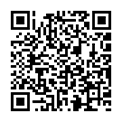 |
編目園地推出LINE服務囉! 歡迎掃描QR Code立即加入編目園地的LINE@帳號, 每月編目園地的更新內容、國內外資訊組織報導等訊息將一次提供給您! |
-
技術規範訊息
-
OCLC 出版研究報告: 將詮釋資料轉化為鏈結資料, 讓數位資源易於被發掘使用
-
本篇報告在於分享 OCLC CONTENTdm 的鏈結資料前導專案的研究成果。( CONTENTdm 是 OCLC 開發的協助各機構建立數位館藏的系統產品)。OCLC和五個使用 CONTENTdm 來管理數位館藏的合作機構,共同探索如何將詮釋資料轉化成鏈結資料的方式及可行性,希望藉此讓數位化後的文化資產及相關的記述資料更容易管理及被發掘使用。
參與的五個機構分別來自不同領域和性質的圖書館:
- The Cleveland Public Library
- The Huntington Library, Art Museum, and Botanical Gardens
- The Minnesota Digital Library
- Temple University Libraries
- University of Miami Libraries
這個前導專案是 OCLC 過去幾年持續進行的鏈結資料研究的另一個階段。報告裡詳細的檢視在一個鏈結資料環境裡工作的好處,開發出資料共享模式的可能性,以及在從詮釋資料轉化為鏈結資料時所面臨的各種挑戰。
-
ALA 推出實體及數位等三項資源協助編目人員熟悉 RDA Toolkit 的運用
-
經過長久的等待,2020 年的12月15日 RDA Toolkit 終於升級為正式版本,提供訂戶們更好的服務。這個版本透過 "3R 工程" 的重新設計和架構調整,目標就是讓 RDA 和 IFLA 的 LRM能夠達成一致,並且讓 RDA Toolkit 能夠更符合現今網路資源取用的各種標準。優化後的RDA 和 RDA Toolkit 將更適用於鏈結資料的環境,也更適合國際間交換書目資料來使用。以後,所有 RDA Toolkit 的訂戶都可以同時使用兩種版本。
ALA 出版部門的副執行董事, Mary Mackay 表示,ALA 出版部門很榮幸得以和加拿大,英國的同業,以及遍佈全世界的執筆者合作,透過出版來支援RDA,預期在這個數位時代,將對全球的編目造成很大的影響。新版網站的推出, 將是 RDA歷史上很重要的一刻。為了協助使用者適應新版的RDA, ALA出版部門今年將推出三種新的資源來協助使用。
- RDA 工作坊系列線上課程,將從 2021年的2月23日到 2021年8月18日陸續展開。本次課程每個星期有一次線上教學,由 RDA 指導委員會成員之一的 Kate James 主講,每次課程有兩個時段可以選擇。
- 印刷版的 RDA 詞彙,包含了 以字母順序排列的 RDA 實體,元素,詞彙及RDA的相關用語。 每一個款目都列出定義及標籤。有必要時還會包含範圍註,倒置詞彙,及互見參考等。提供兩種索引。一個是 RDA 元素索引,以他們所屬的實體範圍來列出,讓使用者更容易了解RDA的架構。另一個是RDA使用的控制詞彙的索引,以元素來排列。
- Introducing RDA 第二版。是一本RDA編目標準的入門指南,亦包含新版RDA Toolkit 相關介紹,適合圖書資訊學系學生,編目人員和其他圖書館專業人員。
除此之外,在 RDA Toolkit 的網站及 Youtube 的頻道上,都可以找到免費的學習資源。
-
-
編目園地快報
-
更新國家圖書館學位論文相關代碼表
-
更新 國家圖書館學位論文學校及系所(新增3校;修改1校)
新增 國家圖書館學位論文系所名稱或代碼新增、修訂一覽表(110年01月)
-
-
資訊組織文獻
-
Authority Control of Arabic Personal Names: RDA and Beyond
-
This paper discusses the basics of creating name authority records for Arabic personal names in accordance with Resource Description and Access instructions and Program for Cooperative Cataloging guidelines. A background into the use of romanization for non-Latin scripts in bibliographic and authority records is provided to establish the context. Issues with romanization that are particular to Arabic are addressed. Separate sections on modern and classical names provide an overview of the major challenges, and strategies to enhance discovery are outlined. The paper concludes with an examination of the possible benefits of identity management and other changes in the authority control landscape for names in non-Latin script.
-
Corporate Bodies: Access Points and Authority Control
-
The concept of authorship is central to how libraries organize their collections. But libraries do not only collect resources created by individuals, they also collect documents issued by organizations. Library catalogers use the concept of a “corporate body” to treat organizations as authors for the purpose of making their documents discoverable to users. This essay looks at the key features of establishing authorized access points (AAPs) and applying authority control for corporate bodies. It examines how practices with regard to corporate bodies have changed over time and considers the changes catalogers might expect to see in the future.
-
Aboutness and Conceptual Analysis: A Review
-
The purpose of this paper is to provide an overview of aboutness and conceptual analysis, essential concepts for LIS practitioners to understand. Aboutness refers to the subject matter and genre/form properties of a resource. It is identified during conceptual analysis, which yields an aboutness statement, a summary of a resource's aboutness. While few scholars have discussed the aboutness determination process in detail, the methods described by Patrick Wilson, D.W. Langridge, Arlene G. Taylor, and Daniel N. Joudrey provide exemplary frameworks for determining aboutness and are presented here. Discussions of how to construct an aboutness statement and the challenges associated with aboutness determination follow.
-
Descriptive Cataloging: The History and Practice of Describing Library Resources
-
Descriptive cataloging is the process of representing resources by recording their identifying traits and selecting specific names and titles to serve as access points. It is a key component of the larger cataloging process alongside subject cataloging, authority work, and encoding. Descriptive cataloging practices have existed for centuries and, over time, have become standardized through the use of cataloging codes. These documents guide this process by prescribing a consistent set of elements, providing directions on how to record these elements, and offering instructions on how to select and format access points. The goal of descriptive cataloging is not to create perfect representations but to provide data to serve users. The international cataloging standard Resource Description and Access (RDA) is now bringing more institutions under the same set of descriptive practices than ever before. This, along with recent technological developments, promises increased sharing and reuse of descriptive cataloging data.
-
國家圖書館編目園地電子報 第239期 2021/02/01發行
編輯:國家圖書館館藏發展及書目管理組
創刊日期:2001/4/2
本報著作權屬「國家圖書館」所有
服務信箱:catadm@ncl.edu.tw